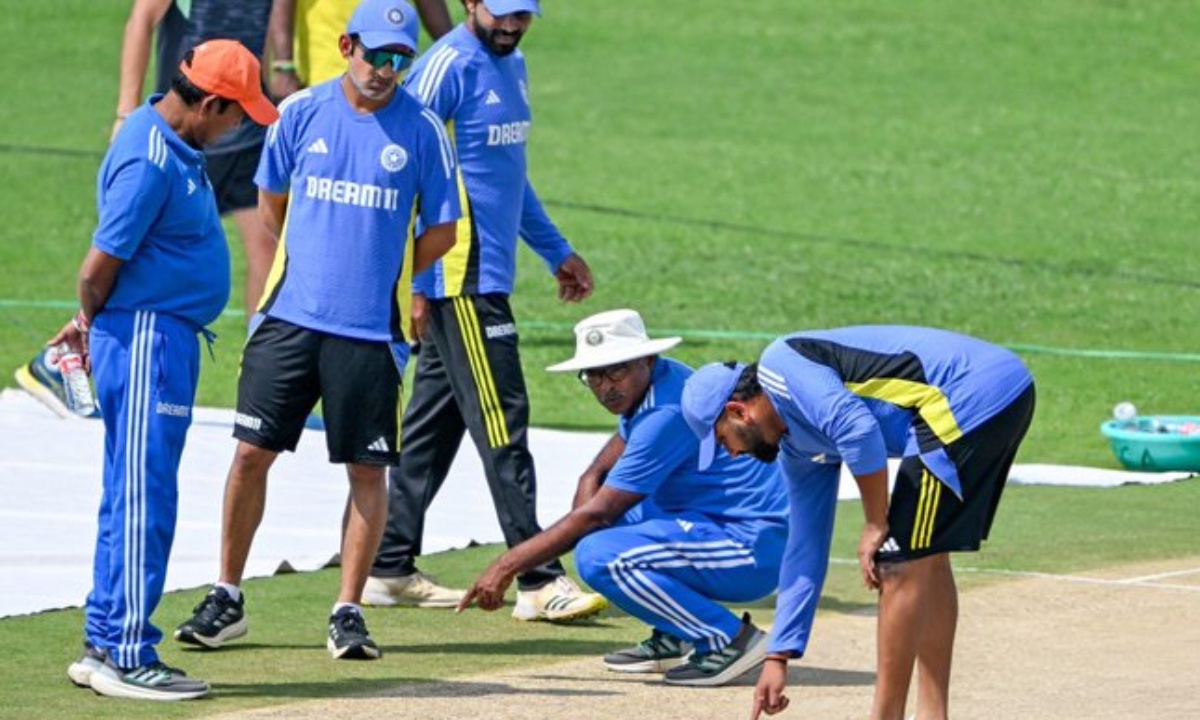As the cricketing world turns its gaze towards Pune for the second Test between India and New Zealand (IND vs NZ), the pitch at the Maharashtra Cricket Association Stadium emerges as a central character in this unfolding drama. Known for its unique characteristics, the Pune pitch is set to offer a narrative where spinners could well be the protagonists, crafting a tale of strategy, skill, and survival.
The Nature of the Pitch

The pitch in Pune where the second test will take place between IND vs NZ, composed of black soil, is notorious for its slow and low bounce. This characteristic, while challenging for batsmen who thrive on pace and bounce, becomes a playground for spinners. The soil’s tendency to absorb moisture means the ball doesn’t come onto the bat as expected, often leading to mistimed shots and edges. This setup is not just about the physical attributes of the pitch but also about the psychological warfare it introduces into the game. Batsmen are forced to adapt, to play with patience, while bowlers, especially spinners, get the chance to dictate terms, spinning webs of deceit with their deliveries.
Historical Context
The Maharashtra Cricket Association Stadium, despite hosting only two Tests previously, has already etched its name in cricketing lore. The 2017 Test against Australia saw Steve O’Keefe, a left-arm spinner, exploit the conditions to devastating effect, claiming six wickets in an innings. This match underscored the pitch’s potential to favor spin. Conversely, the 2019 Test against South Africa saw Virat Kohli’s monumental 254, showcasing that with patience and skill, batsmen can also dominate. These matches provide a backdrop, suggesting that while the pitch might assist spinners, it’s not devoid of runs for those with the temperament and technique to combat its quirks.
Strategic Implications
For the upcoming Test, this pitch report suggests a strategic tilt towards spin bowling. India, with its rich reservoir of spinners, might lean heavily on Ravichandran Ashwin, Ravindra Jadeja, and perhaps even introduce a third spinner. New Zealand, known for their resilience, will need to counter this with their own spin options and rely heavily on their batsmen’s ability to grind out runs. The pitch’s nature could lead to a game where partnerships become crucial, where the ability to rotate strike and defend against turning balls might be as valuable as big hitting.
The second Test in Pune promises to be more than just a contest between bat and ball; it’s a test of patience, strategy, and adaptation. The pitch, with its slow and low bounce, sets the stage for a match where every run could be hard-earned, and every wicket, a triumph of skill over conditions. For fans and analysts alike, this Test will not just be about who scores the most runs or takes the most wickets but about how teams and players adapt to the unique challenge posed by the Maharashtra Cricket Association Stadium pitch. As the teams take the field, the anticipation isn’t just for cricket but for a masterclass in how the game can be played when conditions are anything but conventional.





